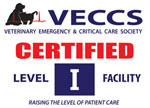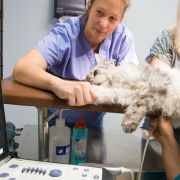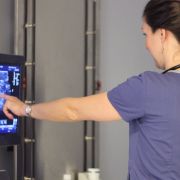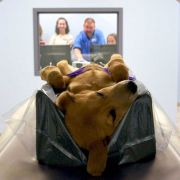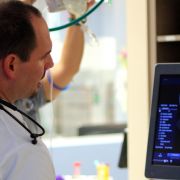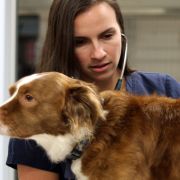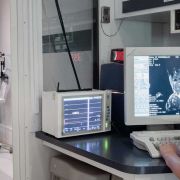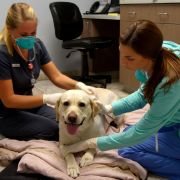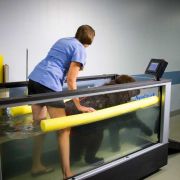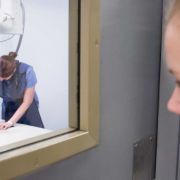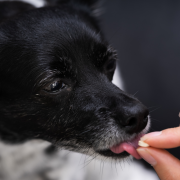Date:
By Dr. Alan Green
These are exciting times at CVRC. Last month you met Dr. Jennifer Au, our lead surgeon in our Center for Orthopedics and Minimally Invasive Surgery. Her explanation of osteoarthritis was comprehensive. This month, it gives me great pleasure to introduce Dr. Artise Stewart, a certified canine rehabilitation practitioner.
Dr. Stewart works hand in hand with our surgical and neurological departments assisting patients to regain function as quickly as possible. We believe the advantage of having our new Department of Rehabilitation enables your pets to have the added benefits and expertise to allow them to heal and return to normal activity faster and with less pain.
One of the more common things I hear from clients is “my dog seems a little arthritic, but I know he/she is not in any pain cause he/she is not crying.” By the time you are seeing signs like limping, reluctance to jumping, muscle loss, slowness to get up or down or inability to get in or out of the car, your dog is in pain. Dogs and cats show pain very differently than people.
They typically do not cry or whimper, but they may hide, pant, shiver as if they are cold or have behavior changes. Osteoarthritis is painful because of inflammation, destruction of cartilage and eventual bone on bone contact. If you are seeing any of these signs, your pet needs to be evaluated by your veterinarian to determine what joint is affected. A full physical exam will be performed to note any areas of muscle atrophy, thickened joints, swollen joints or joints with decreased range of motion. Radiographs or X-rays may also be taken to fully examine the joints and bones.
The most common therapy for osteoarthritis is oral medication. NSAID’s or non-steroidal anti-inflammatories are typically prescribed for inflammation due to arthritis. Pain medications may also be prescribed. Most pets, including cats, need some form of oral medication and joint supplements to aid in making them more comfortable on a day-to-day basis. One of the new emerging and exciting fields in veterinary medicine is physical rehabilitation, and CVRC has a full, on-site department to work with pets who need this service. Yes, just like physical therapy for humans! Physical rehabilitation can aid our arthritic pet patients by increasing circulation, building back muscle mass, decreasing pain and improving mobility.
One of the most frustrating issues for clients is having an overweight pet with osteoarthritis. This is a “Catch 22” for these pets because they need to exercise to lose the weight but are unable to due to their decreased mobility and pain. That’s where physical rehabilitation can play a huge role. Swimming, laser therapy, massage and heat therapy are just some of the tools we use to improve comfort and mobility in our overweight, arthritic patients. By incorporating these therapies into their life, they lose weight, become more comfortable and are able to return to more function.
Due to the pain, stiffness and decreased muscle mass, most arthritic animals do not want to move very much. This is one of the worst things we can do for them. It is very important that our arthritic pets move to increase circulation, promote muscle building and prevent stiffness. Home exercises are an easy and fun way to help arthritic patients. Home exercises are tailored to each patient depending on what joints are affected and can be done inside a cool environment. Most of these exercises will incorporate things you already have at home and will focus on new tricks and some activities that your pet already enjoys.
Over time these exercises will become easy, and your pet will be ready for more challenging therapy! Other modalities such as TENS (transcutaneous electrical nerve stimulation), laser therapy and therapeutic ultrasound may also aid in improving your pets mobility.
If your pet has already been diagnosed with osteoarthritis, physical therapy should begin immediately. This way a therapy, exercise and pain management program can be formulated so your pet may be on the move again.



